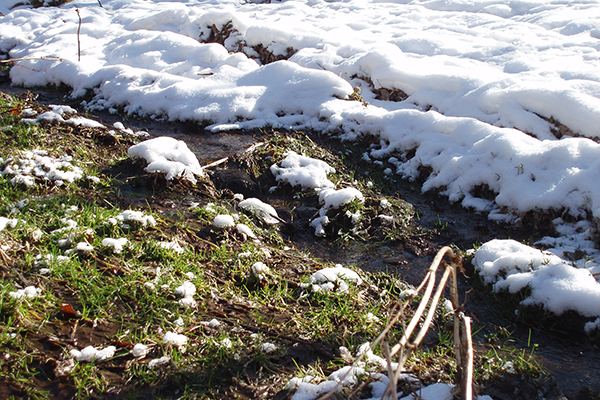Water is strong, but tree canopies help to soften the raining blows.
Last summer I spent a day helping my mom at her Armonk IBM office in Westchester County to get organized for an event she would run the following week. While we worked it rained lightly on and off.
The evidence of the rain was clear by the time we went home. Almost everywhere outside was wet, except for a few key spots right under the trees. Why do you think these areas stayed dry?
The rain had been pretty light and sporadic, not like the heavy summer thunderstorms we had been getting. As a result, tree canopies were more than enough to keep the rain from reaching the ground.
Without trees, raindrops hit the earth, disturbing and loosening the soil in a process called rainsplash erosion. During heavy rainfall, surface runoff can wash away this loose soil via sheetflow erosion. In a recent Forestry Best Management Practice (BMP) newsletter from the North Carolina Forest Service, I learned that a heavy rainfall event occurring over one acre of bare soil can splash 89 tons of soil particles into the air!
When trees grow in an area, their leaves reduce the force and number of drops that hit the ground under them by intercepting the rain as it falls. Basically, the trees act like an umbrella of sorts by catching the raindrops. Loose sediment is the number one polluter of our fresh waterways, and vegetation, especially in tree-form, is one of the simplest, cheapest, and most effective defenses we have against this kind of contaminant.
The ways that trees work to protect our waterbodies, like filtering excess nutrients out of water, holding soil in place, and slowing the flow of rain before it hits the ground can be hard to see with our own eyes. The sidewalk and trees in front of IBM demonstrate this canopy effect particularly well because they showed the color difference between the wet and dry spots. Keep an eye out after the next time it rains and you might be able to see your trees in action, too.
About the Author: Jessica Alba is a Lead Instructor at the Ashokan Center, which specializes in environmental education, science, research, and the arts. Jessica will formally join the WAC Forestry Program and the MyWoodlot Team as our Croton Watershed Forester on July 1, 2019. Welcome Jessica!
Check out: Trees in Action: Part 2






